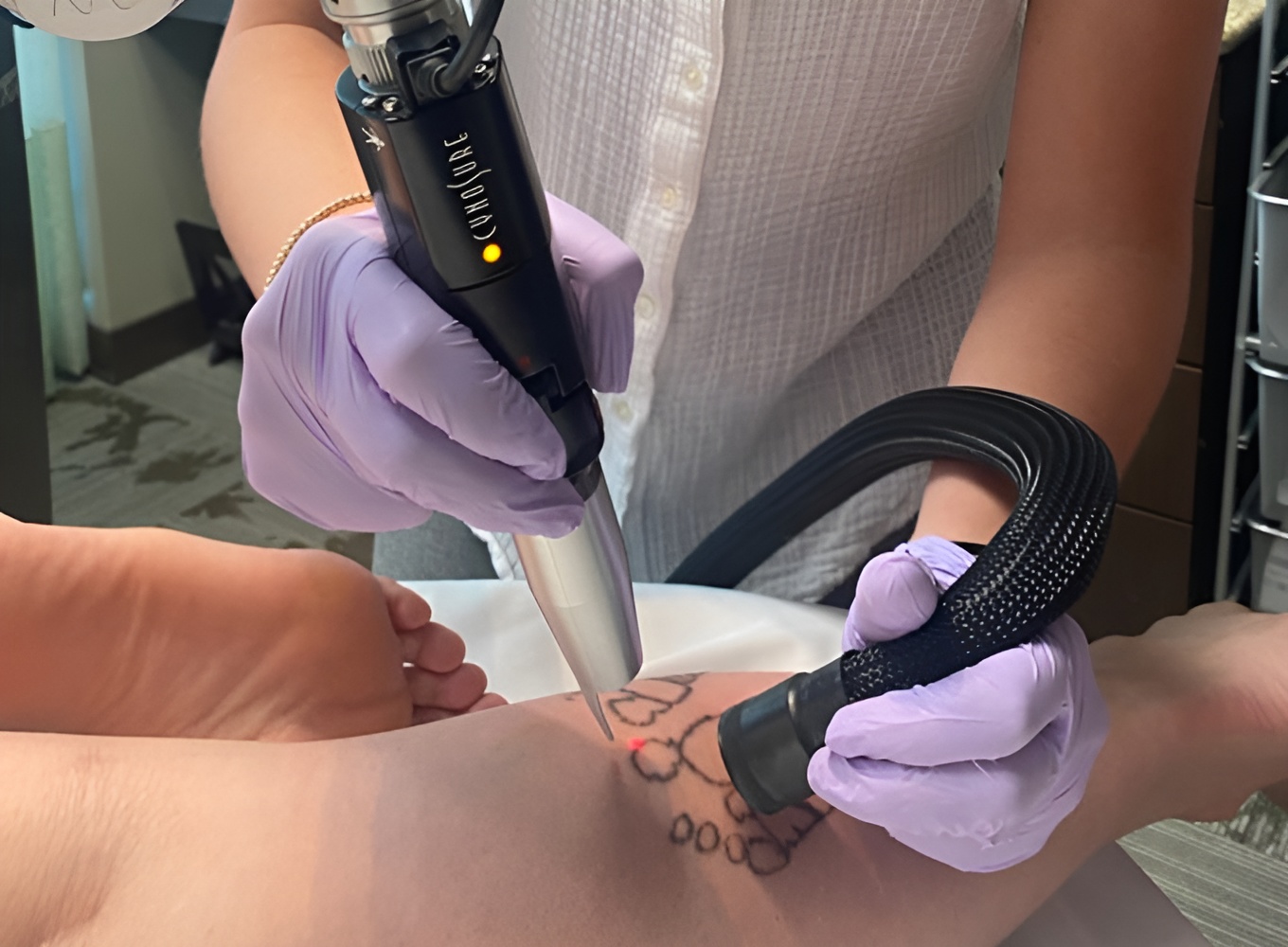Tattoos have been a form of self-expression for centuries, but what happens when that permanent mark on your skin no longer aligns with who you are? Whether it's a change in personal taste, the need for a more professional appearance, or simply the desire to erase a youthful mistake, the demand for Tattoo Removal in Dubai has grown significantly. Thanks to advancements in laser technology, what was once a difficult, painful, and often unsuccessful procedure is now more accessible, effective, and less invasive. This article explores how laser technology has revolutionized tattoo removal, making it easier than ever to erase unwanted ink.
Understanding Tattoo Removal: The Basics
Tattoo removal has evolved significantly over the years. Traditional methods included dermabrasion, surgical excision, and chemical peels, all of which came with high risks of scarring and uneven skin texture. However, the advent of laser technology has transformed the landscape of tattoo removal, offering a safer and more effective alternative.
Laser tattoo removal works by targeting the ink particles in the skin with pulses of high-intensity laser light. The laser energy is absorbed by the tattoo pigments, breaking them down into smaller particles that are eventually eliminated by the body's immune system. The process is gradual, requiring multiple sessions to achieve complete removal, but it is significantly less painful and damaging to the skin compared to older methods.

How Laser Tattoo Removal Works
Laser tattoo removal utilizes a process called selective photothermolysis, which means that the laser selectively targets and heats the ink particles without damaging the surrounding skin tissue. The key to this process is the wavelength of the laser light, which is chosen based on the color of the tattoo ink.
Different colors of ink absorb different wavelengths of light. For example, black ink absorbs all wavelengths, making it the easiest to remove, while lighter colors like green, yellow, and blue require specific wavelengths and are generally more challenging to eliminate. The laser emits short pulses of light that penetrate the skin and break the ink particles into tiny fragments. Over time, these fragments are absorbed and processed by the body's immune system, leading to the gradual fading of the tattoo.
Types of Lasers Used
Several types of lasers are used in tattoo removal, each suited to different ink colors and skin types:
- Q-Switched NdLaser: This is the most commonly used laser for tattoo removal. It operates at two wavelengths, 1064 nm and 532 nm, making it effective for removing black, blue, and red inks. The 1064 nm wavelength is particularly effective for darker skin tones, while the 532 nm wavelength is used for lighter colors.
- Q-Switched Ruby Laser: This laser operates at a wavelength of 694 nm and is particularly effective for green and dark blue inks. However, it is less commonly used today due to the development of more advanced lasers.
- Q-Switched Alexandrite Laser: Operating at a wavelength of 755 nm, this laser is effective for removing green and blue inks. It is less effective on red and yellow inks.
- PicoSure and PicoWay Lasers: These are picosecond lasers that deliver ultra-short pulses of energy. They are considered more effective and faster than traditional Q-switched lasers, particularly for stubborn tattoos and complex ink colors.
The Tattoo Removal Process: What to Expect
Consultation
The first step in the tattoo removal process is a consultation with a trained professional. During this session, the practitioner will assess the tattoo, including its size, color, location, and your skin type. They will also discuss your medical history and any potential risks or complications. Based on this evaluation, the practitioner will develop a customized treatment plan, including the number of sessions required, expected outcomes, and cost.
The Treatment Sessions
Tattoo removal typically requires multiple sessions, spaced several weeks apart, to allow the skin to heal and the immune system to clear the fragmented ink particles. The number of sessions needed varies depending on factors such as the tattoo's age, size, color, and depth, as well as your skin type and overall health.
During each session, the practitioner will apply a topical anesthetic to minimize discomfort. The laser will then be applied to the tattoo in short bursts, with each session lasting anywhere from a few minutes to an hour, depending on the size and complexity of the tattoo. After the session, the treated area may be red, swollen, and tender, similar to a mild sunburn. These side effects typically subside within a few days.
Aftercare and Recovery
Proper aftercare is crucial for the success of the tattoo removal process. After each session, the treated area should be kept clean and dry. The practitioner may recommend applying an antibiotic ointment and covering the area with a sterile bandage to prevent infection. It's also important to avoid sun exposure and refrain from picking or scratching the treated area to minimize the risk of scarring.
Over the weeks following each session, the tattoo will gradually fade as the body clears the fragmented ink particles. It's essential to follow the practitioner's aftercare instructions carefully to ensure optimal results and minimize the risk of complications.
Benefits of Laser Tattoo Removal
Laser tattoo removal offers several advantages over traditional methods:
- Minimized Risk of Scarring: Unlike surgical excision or dermabrasion, laser removal does not physically remove layers of skin, reducing the risk of scarring.
- Effectiveness on All Skin Types: Modern lasers can be adjusted to suit different skin types and tones, making the procedure accessible to a broader range of people.
- Targeted Treatment: The laser can be precisely targeted to the ink, minimizing damage to surrounding tissues and ensuring that even complex, multicolored tattoos can be effectively removed.
- Short Recovery Time: Most patients experience only mild discomfort and minimal downtime after each session, allowing them to return to their daily activities quickly.
- Gradual Fading: The gradual fading of the tattoo over multiple sessions allows for more control over the removal process, especially if the goal is to lighten the tattoo for a cover-up rather than complete removal.
Potential Risks and Side Effects
While laser tattoo removal is generally safe, it is not without risks. Potential side effects include:
- Skin Discoloration: Hypopigmentation (lightening of the skin) or hyperpigmentation (darkening of the skin) can occur, especially in individuals with darker skin tones.
- Scarring: Although rare, scarring can occur if the treated area is not properly cared for during the healing process.
- Infection: There is a small risk of infection if the treated area is not kept clean and dry.
- Incomplete Removal: Some tattoos, particularly those with light colors or made with certain inks, may not be completely removable, even with advanced laser technology.
Conclusion
Laser technology has made tattoo removal more accessible, effective, and safer than ever before. While the process requires patience and proper aftercare, the results can be life-changing for those looking to erase an unwanted tattoo. Whether you're seeking complete removal or simply lightening for a cover-up, consulting with a qualified professional is the first step toward achieving your desired outcome. As laser technology continues to evolve, the future of tattoo removal looks brighter, promising even more efficient and less invasive solutions.

